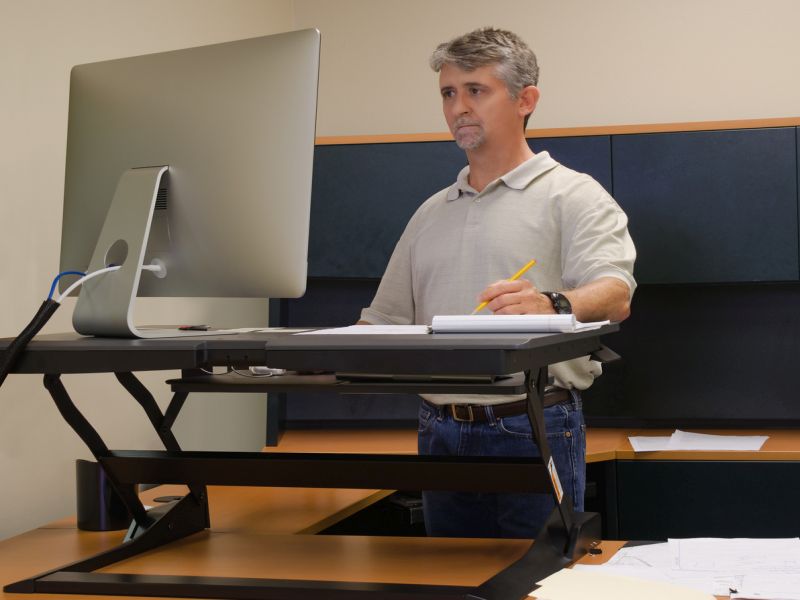Take a Stand Against Too Much Sitting at Work
By Len CanterHealthDay Reporter

WEDNESDAY, Jan. 9, 2019 (HealthDay News) -- We know that the amount of sitting Americans do is now considered a health threat. Researchers estimate that the average adult spends more than 8 hours a day being sedentary, and it's not just all that time spent in front of the TV.
If you have a desk job and get home too exhausted to do more than plop on the sofa, that number can double.
The combination of too much sitting and too little exercise can set the stage for obesity and chronic conditions. It may also lead to premature death, according to research published in The Lancet, and other journals.
The problem is that even if you meet the recommendation of a 30-minute workout every day, that may not be enough to counteract all the sitting. The study suggests that it's better to get in 60 or more minutes of activity daily.
But that doesn't mean you have to double the length of your workouts. In fact, it's better to reach the additional goal with small chunks of movement throughout the workday, as well as during evening hours.
As the American College of Sports Medicine puts it, "interrupt" your sitting time with movement.
Of course, you can't run to the gym every couple of hours when you're at an office, but here are four ideas you can do at work:
- Use a standing desk periodically or simply buy an inexpensive gadget to raise your monitor and stand up.
- Walk during every coffee and water cooler break.
- Walk in place whenever you take or make a phone call.
- Stand to do upper body stretches twice a day.
Devise your own mix of mini-workouts, and remember that it takes just 3 minutes of light activity during each of your waking hours to make a difference.
More information
The American Council on Exercise has more tips to easily add more movement to your workday.

The news stories provided in Health News and our Health-E News Newsletter are a service of the nationally syndicated HealthDay® news and information company. Stories refer to national trends and breaking health news, and are not necessarily indicative of or always supported by our facility and providers. This information is provided for informational and educational purposes only, and is not intended to be a substitute for medical advice, diagnosis, or treatment.

